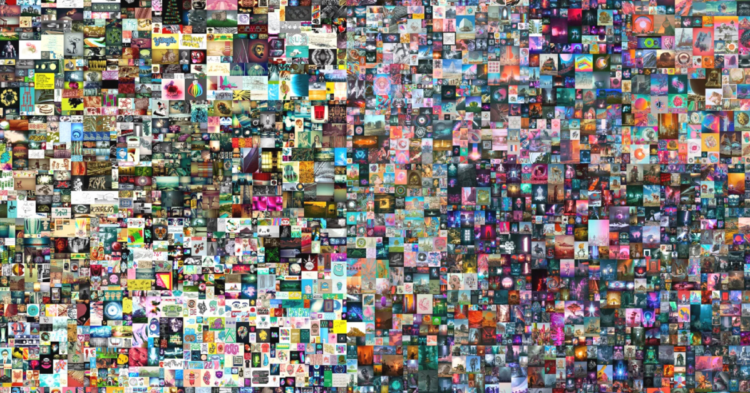The first Non-Fungible Token (NFT) artwork was sold for $69,346,250 at an online auction. Much to internet memes’ delight, the amount rounds to $69 million. This makes the artist, Mike Winkelmann (AKA Beeple), one of the most expensive living artists. The artwork is a collage of 5,000 images and it took him 13 years to make. The initial auction price was $100.
Digital artwork can normally be copied.
The more copies of artwork that exist, the lower the value. Because of this, digital artwork has had a tough time attaining value. NFT’s solve this by using blockchain technology to verify that a piece of artwork is original.
What is a blockchain?
A blockchain is a digital ledger that records a series of transactions using encryption. Each record has an encrypted code that points to the location of the previous record on the ledger. The encryption is created using not only the information about the location of the previous record but also information in the record.
This means that to change a record, you would also have to change every subsequent record attached to it. So, the amount of computing power it would take to falsify a record is greater than the potential value of changing information in a record.
How does a blockchain work with art?
The person that bought the artwork, purchased an NFT . It is a token that verifies that they are the owner of the sole artwork. Even if you make a copy of the actual artwork, the blockchain ledger can prove that you do not own it and therefore you cannot resell the artwork. So, it protects both the owner’s investment and their bragging rights.
This may be the future of digital artwork.
“He showed us this collage, and that was my eureka moment when I knew this was going to be extremely important,” Noah Davis, a specialist in contemporary art who works at the auctionhouse, told The Verge . “It was just so monumental and so indicative of what NFTs can do.”
Is there a downside?
Finding a way for artists to be paid for their work is great, right? Not exactly. An added layer of security of blockchains is that it takes a lot of computational power to create a record in the chain. An army of computers compete to brute force solve a difficult puzzle. The winning computer gets a small award and the right to create the record. This makes it hard for just anyone to create a record, which reduces fraud. But, it uses a lot of power and contributes to the carbon footprint.
So, is this a step in the right direction? It is too early to say. But it is definitely something that should be on all of our radars, and Winkelmann himself said he “really [feels] like this is going to be the next chapter of art history.”
h/t: CNN

















































